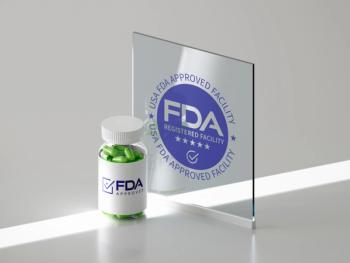
Screening-to-diagnosis interval vital for gestational diabetes outcomes
Timely diagnosis of gestational diabetes is crucial for optimal maternal and fetal health, but a recent study highlights demographic disparities in screening delays and the need for further research on potential health impacts.
Chloe Getrajdman, MD, MSCR, Resident at Mount Sinai, discusses a recent study evaluating the association between the screening-to-diagnosis interval and gestational diabetes outcomes.
Contemporary OB/GYN:
What is the importance of having a short interval between screening and diagnosis for gestational diabetes (GDM)?
Chloe Getrajdman, MD, MSCR:
Screening for gestational diabetes (GDM) is important in order to identify those individuals with the condition and prevent adverse maternal and fetal outcomes that can come from having this diagnosis in pregnancy. The gold standard method of screening involves a 1-hour screening test, followed by a 3-hour test if the 1-hour test is positive. Since the 3-hour test requires individuals to fast for at least 8 hours, it has to be scheduled on a day when the patient can return to the clinic fasting. This inherently creates delays in diagnosis and, ultimately and more importantly, delays in treatment. We hypothesized that a prolonged interval between screening and diagnosis of GDM would be associated with a higher likelihood of adverse maternal and fetal outcomes.
Contemporary OB/GYN:
Please provide a brief overview of your study presented at SMFM 2025.
Getrajdman:
The objective of the study was to determine whether the interval between GDM screening via the 1-hour glucose challenge test (GCT) and the 3-hour glucose tolerance test (GTT) is associated with adverse perinatal outcomes. The study was a retrospective cohort study of 389 singleton, non-anomalous pregnancies from 2019 to 2022, diagnosed with GDM with this 2-step test.
Contemporary OB/GYN:
What results did the study find on the association of the interval between GDM screening and diagnosis with perinatal outcomes?
Getrajdman:
The study demonstrated that the majority of patients (66.3%) had an interval of screening less than 10 days, while approximately about a third of patients (33.7%) had an interval of greater than or equal to 10 days. Patients with delayed screening were more likely to be obese (30% vs 43.7%), Black (9.4% vs 12.9%), and have public insurance. The results of the study did not demonstrate any significant difference in a composite outcome of perinatal morbidity that included macrosomia, shoulder dystocia, hypertensive disorders of pregnancy, cesarean delivery for presumed macrosomia, neonatal intensive care unit (NICU) admission, among other adverse neonatal outcomes.
Contemporary OB/GYN:
What are the key clinical takeaways of this information for health care providers?
Getrajdman:
While there were no differences in our primary outcome, this study did reveal demographic differences in the population of patients who were able to undergo their 3-hour screening test within 10 days, as compared to those who completed their test greater than 10 days from the screening test. More research is needed to better understand the barriers to returning for the 3-hour test, and whether this delay between screening and diagnosis may result in other adverse outcomes not captured by this study.
Newsletter
Get the latest clinical updates, case studies, and expert commentary in obstetric and gynecologic care. Sign up now to stay informed.
















